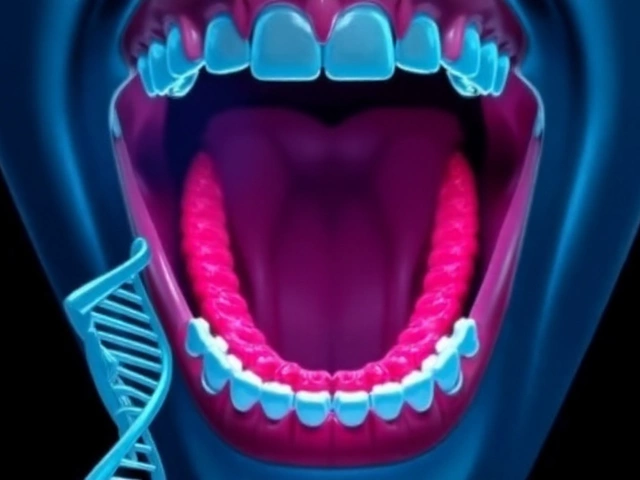
Your mouth hosts one of the busiest ecosystems on the planet—and now, scientists say it hides giant DNA packages that change the rules. A University of Tokyo team has uncovered oversized genetic elements inside everyday oral bacteria, and they’re not the usual plasmids you might have heard about. These new players, dubbed “Inocles,” are so large and so gene-rich that they may rewrite how we think about the oral microbiome, from daily biofilm survival to the roots of gum disease.
What the team found—and why it matters
The work comes from researchers led by Project Research Associate Yuya Kiguchi at the University of Tokyo’s Graduate School of Frontier Sciences, in collaboration with the Yutaka Suzuki Lab. Motivated by recent reports of massive extrachromosomal DNA in soil microbes, the team asked a simple question: if strange DNA is shaping life in dirt, what’s hiding in saliva? So they collected saliva, pulled out the DNA, and went looking for pieces that didn’t fit the usual playbook.
They found Inocles—huge circular DNA elements that live alongside a bacterium’s main chromosome, not within it. Unlike typical plasmids that carry a handful of accessory genes and tend to be relatively small, Inocles average around 350,000 base pairs. In microbial genetics, that’s enormous. It puts them in the league of so-called megaplasmids and other outsize extrachromosomal elements that are rare in human-associated environments.
Size alone isn’t the headline. It’s what Inocles seem to do. The elements are loaded with genes that help bacteria ride out the chaos of the mouth: oxidative stress from oxygen swings and immune bursts, DNA damage from reactive molecules, and mechanical and chemical assaults that threaten the cell wall. Put simply, Inocles look like survival kits—ready-made modules that could help bacteria persist on the tongue, in dental plaque, and along inflamed gums where conditions turn hostile fast.
Kiguchi describes these DNA packages as extra footnotes stapled onto the main text of a microbe’s genome. The metaphor fits: the bacterium holds its core instructions, but Inocles add context—tools for when the air thins, when peroxide spikes, or when the immune system flares. The big unknown now is how often these footnotes change the story.
To understand what makes the oral environment so tough, consider the daily grind. Oxygen levels jump between aerobic saliva and oxygen-poor plaque. pH swings after meals, especially when sugary snacks feed acid-producing bacteria. Antimicrobials from toothpaste and mouthwash come and go. The immune system fires bursts of reactive oxygen. Even brushing can shear biofilms and expose cells to stress. Genes for oxidative stress resistance, DNA repair, and fortified cell walls aren’t a luxury here—they’re a winning hand.
The team’s data suggest Inocles carry gene sets tuned to these stressors. Oxidative defense genes help neutralize damaging molecules. DNA repair systems patch breaks before they spiral into lethal mutations. Cell wall reinforcement can toughen bacteria against detergents, enzymes, and shifting osmotic pressures. None of this proves function on its own, but the gene catalog tells a coherent story: Inocles confer resilience.
How did the team spot something so large that earlier methods missed it? The answer is in the tools. Traditional short-read DNA sequencing is powerful but struggles to assemble big, repetitive circles of DNA cleanly. By applying metagenomic approaches that likely included long-read technologies, the researchers could capture long stretches and stitch them into near-complete circular elements. That’s how these giants stepped out of the blur and into view.
Inocles also sit in a broader family of extrachromosomal DNA that includes plasmids, phages (viruses that infect bacteria), and other oddities scientists are still classifying. What’s new here is the scale and apparent functional focus in a human-associated setting. Soil and wastewater communities have shown surprising DNA innovation. Finding similarly oversized elements in saliva underscores how much we still don’t know about everyday microbes living with us, not just around us.
Do Inocles move between bacteria? Can they jump across species? The study doesn’t claim that, and it matters. Mobility would mean Inocles could spread survival traits across the oral community, potentially reshaping competition in plaque or resistance to stress during gum inflammation. Even if they don’t hop, their presence inside key species could tilt which microbes dominate under stress, which diets or habits they tolerate, and how fast they bounce back after a dental cleaning or an antibiotic course.
Think about dental plaque. It’s a dense, structured biofilm where microbes share resources and shield each other from threats. If some bacteria carry Inocles with heavy-duty repair and defense genes, they might act like anchors in the biofilm, stabilizing the community when conditions go bad—after a peroxide mouthwash, for example, or during an immune flare in gingivitis. That stability can be good or bad depending on what’s stabilized. A tough biofilm that also produces acids or inflammatory byproducts might be harder to disrupt and more likely to drive disease.
Now consider oral disease pathways. In caries (tooth decay), acid production and enamel demineralization dominate. In periodontitis (advanced gum disease), inflammation and tissue breakdown are central. In both cases, oxidative stress and DNA damage swirl through the story, and biofilms endure repeated stress. Inocles carrying stress-defense and repair genes could give their hosts an edge in these micro-environments. That doesn’t mean Inocles cause disease, but they could help certain players survive long enough to tip the balance.
The flip side: if we can recognize Inocles, we might use them as flags. Screening for their presence and gene content in saliva could help identify patients whose oral communities are primed for resilience under stress—possibly the ones who don’t respond well to routine care, or who rebound quickly after antimicrobial rinses. That’s speculative today, but the diagnostic angle is clear: new DNA elements can become new risk markers.
Therapeutically, the door cracks open a bit wider. If Inocles encode unique replication or maintenance systems, in theory they could be targeted without hitting the host bacteria’s core genome. Imagine disrupting an Inocle’s replication or partitioning machinery so the survival kit disappears over time, making the bacteria less robust during treatment. Precision antimicrobials, phage-based approaches, or CRISPR tools could aim at these elements specifically. That’s not tomorrow’s clinic, but it’s a testable idea for research labs.
Let’s ground this in the ecology of the mouth. There isn’t one oral habitat; there are dozens: the aerobic saliva, the oxygen-poor pockets under the gumline, the rough surface of the tongue, the protected crevices between teeth, the gingival crevicular fluid that seeps during inflammation. Each niche throws different stress at bacteria. A general-purpose stress module—exactly what Inocles seem to carry—offers flexibility. It’s like packing a raincoat, sunscreen, and a first-aid kit for a trip where the weather changes without warning.
Methodologically, the path likely looked like this: collect saliva from volunteers; extract the community DNA; sequence deeply enough to capture rare, long molecules; assemble the reads into contigs; circularize where possible; and then annotate gene content to infer function. Along the way, the team would have filtered out human DNA and checked the assembled circles for hallmarks of replication and maintenance. The reported average size—about 350 kilobases—suggests these aren’t fragments or noise; they’re real entities with enough room for dozens of functional modules.
There are big caveats. Annotation predicts function based on similarity to known genes, but lab tests are needed to prove what an Inocle actually does inside a cell. We don’t know how common these elements are across people, ages, diets, or health states. We don’t know how stable they are over time or whether they bloom during disease and fade in health. And we don’t know if they carry any antibiotic resistance genes that could complicate treatment. These are all answerable questions, but they require targeted experiments, not just sequencing.
Context helps here. Extrachromosomal DNA is a core part of microbial life, not a curiosity. Plasmids move traits like metal resistance. Phages shuffle genes and drive evolution. Some bacteria carry “chromids,” large DNA elements that blur the line between plasmids and chromosomes. Inocles fit into this spectrum but push the size boundary in a human mouth. The name may be new, but the concept—big, self-maintaining DNA packages that give microbes upgrades—has deep roots in microbial ecology.
If you’re a dentist or hygienist, you might be wondering what this means for your patients. For now: not a change in care. Brush, floss, regular cleanings—those remain the front line. But keep an eye on research. If Inocles correlate with stubborn plaque or recurrent gum inflammation, saliva screening could become a tool to flag at-risk patients or to track response to therapy. In labs, Inocles might serve as biomarkers when testing new rinses, probiotics, or biofilm disruptors.
Public health researchers and microbiome scientists will see another angle: diversity. The oral microbiome differs across countries, diets, and access to care. If Inocles are widespread, their gene content could vary with environment and lifestyle. That could explain why some communities show different oral disease patterns even when clinical care looks similar on paper. It also means large, diverse cohorts will be essential before anyone declares what “normal” or “risky” Inocle profiles look like.
There’s also a tech story here. Long-read sequencing and improved assembly tools are exposing big, complex DNA structures that short reads often missed. As the tools keep improving—better accuracy, higher throughput—we’ll likely see more of these elements, not fewer. Some will be red herrings. Many will be real. The trend points toward a future where clinical labs can profile extrachromosomal DNA as easily as they run standard bacterial panels today.
What would move this field fastest? Culturing bacteria with and without their Inocles and watching what changes under stress. Directly testing whether Inocles transfer between cells. Measuring how Inocle abundance shifts during treatments like scaling and root planing, or after a course of antibiotics for a sinus infection that also hits oral bacteria. And yes, checking whether kids, smokers, people with diabetes, or those with dry mouth show distinct Inocle signatures.
One more question nags: when did these elements show up? Have Inocles been quietly riding along with us forever, or are they rising as modern diets, hygiene products, and medications reshape the oral ecosystem? Stored saliva samples from past studies could help answer that—retrospective sequencing might reveal whether these giants were always there, just hiding behind the limits of older tools.
- What to watch next: lab tests that confirm Inocle gene functions under real oral stress.
- Large, multi-country studies to map how common Inocles are and how their gene sets vary.
- Experiments tracking whether Inocles move between species inside biofilms.
- Clinical pilots testing saliva screens for Inocle signatures in stubborn gum disease.
- Therapeutic research targeting Inocle replication or maintenance without harming core microbiota.

How this could reshape oral health research
For years, gut microbes hogged the spotlight. The mouth is now catching up, and Inocles give it a headline worth the attention. They hint that oral bacteria carry modular survival systems far bigger and more sophisticated than we assumed. That changes how we model oral ecosystems, how we judge risk, and how we imagine targeted treatments that don’t carpet-bomb the microbiome.
If the main genome is the engine, Inocles might be the off-road kit—bolted on, bulky, and built for rough conditions. Spotting them in saliva is the first step. Next comes figuring out when the kit engages, whether it spreads, and how we can measure it in everyday clinical settings without turning checkups into research projects. The promise is a future where a quick saliva test doesn’t just tally species—it reads the survival gear those species carry.
That would be a shift from who’s there to what they can do. And in the mouth, where conditions flip fast and often, what they can do may matter most.




